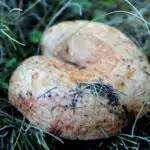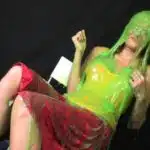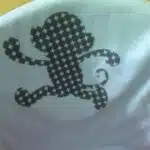Berry stains on cloth carpet and upholstery can be a nuisance for homeowners who are looking to maintain the appearance of their furniture. Berries contain pigments that can easily penetrate fabrics, leaving unsightly stains that are difficult to remove using conventional cleaning methods. Fortunately, there are several effective ways to remove berry stains from different types of fabric without damaging the material.
As an experienced carpet cleaning expert, I understand the importance of providing practical solutions for common household problems. In this article, I will share some of my best tips and tricks for removing berry stains from cloth carpet and upholstery. Whether you’re dealing with fresh or set-in stains, these methods will help you restore your fabrics to their original state and keep them looking clean and vibrant for years to come. So if you’re ready to tackle those stubborn berry stains once and for all, let’s get started!
Understanding The Nature Of Berry Stains
Berry stains can be stubborn and tricky to remove, but with the right approach, they can be tackled effectively. To understand how to deal with these stains, it’s important to first understand the nature of berry pigments. Berries are rich in natural dyes that are designed to resist fading and weathering. These pigments are what give berries their vibrant colors and strong flavors.
However, when berry juice or pulp comes into contact with fabrics like carpets or clothing, these pigments can quickly become a problem. Depending on the type of berry, different pigments will be present, which means that different stain removal techniques may be needed for each type of stain. Some common types of berry stains include blueberry stains, raspberry stains, and blackberry stains.
To remove berry stains effectively, it’s essential to know what kind of berry you’re dealing with and what pigment is causing the discoloration. By understanding the nature of these stains and how they work, you can take a more effective approach to removing them from your carpet or clothing. In the next section, we’ll explore how to assess the severity of a berry stain so that you can determine the best course of action for getting rid of it once and for all.
Assessing The Severity Of The Stain
Determining the severity of a berry stain is crucial in deciding the best approach for removing it. The severity can range from a mild surface stain to a deeply ingrained one that has penetrated the fibers of your carpet or cloth. To determine its severity, you need to consider how long the stain has been there and what type of berry caused it. For instance, blueberries and raspberries are known to leave stubborn stains that require more intensive cleaning methods than strawberries.
It is essential to act quickly when dealing with berry stains since they can set in fast, especially on light-colored carpets and cloth. Time-sensitive removal techniques should be employed immediately after discovering the stain. Before attempting any cleaning method, start by blotting up as much excess juice as possible using a clean white cloth or paper towel. Do not rub the stain, as this could spread it further and make it harder to remove.
When determining the severity of a berry stain, always err on the side of caution and treat it with care. Avoid using harsh chemicals or bleach on your carpet or cloth as these could cause discoloration or damage to the fibers. Instead, opt for gentler cleaning solutions like vinegar or baking soda paste. By being attentive and proactive, you can ensure that your carpet or cloth remains looking fresh and vibrant even after experiencing a stubborn berry stain.
Blotting Up The Excess Juice
When it comes to removing berry stains from cloth carpet and other fabrics, quick action is crucial. The longer the stain remains untreated, the more difficult it becomes to remove. Therefore, it’s essential to act promptly when you notice a berry stain on your carpet.
One of the first things you should do when dealing with a berry stain is to blot up any excess juice that hasn’t yet been absorbed by the fabric. This can be done using a clean, dry cloth or paper towel. Gently press down on the stained area, being careful not to rub or scrub too hard as this can damage the fibers of your carpet or fabric.
If blotting up the excess juice doesn’t completely remove the stain, there are alternative methods you can try. For example, you could apply a mixture of vinegar and baking soda to the affected area and let it sit for several minutes before rinsing with cold water. Alternatively, you could try rubbing alcohol or hydrogen peroxide as these are known for their stain-removing properties. However, before trying any alternative methods, it’s important to test them on an inconspicuous area first to ensure they don’t cause damage to your carpet or fabric.
Transition: Now that you have successfully blotted up any excess juice from your berry stain, let’s move on to learn how to apply a stain remover solution – another effective method for removing stubborn stains from carpets and fabrics.
Applying A Stain Remover Solution
Stain remover solutions can be a great way to eliminate stubborn berry stains from your carpet or clothes. There are many DIY alternatives that you can try at home, such as using baking soda and vinegar. Alternatively, there are various commercial products available on the market that can help remove these pesky stains.
When choosing a commercial product, it is important to check the label for any warnings or precautions before use. Some products may contain harsh chemicals that can damage your fabric if not used correctly. Always follow the instructions carefully and test the product on a small inconspicuous area first before applying it to the stain.
If you prefer to use DIY alternatives, baking soda and vinegar can work wonders on berry stains. Mix equal parts of baking soda and water to make a paste, then apply it directly onto the stain. Let it sit for 30 minutes before rinsing with cold water. Next, mix equal parts of vinegar and water in a spray bottle and apply it onto the stain. Blot with a clean cloth until the stain is removed.
Transition: Using natural ingredients like vinegar and baking soda not only helps remove berry stains effectively but also reduces exposure to harmful chemicals that may damage your fabric. Learn how to use this simple yet effective method in the next section.
Using Vinegar And Baking Soda
- Vinegar is a powerful cleaning agent that can be used to effectively remove berry stains from cloth carpet.
- Baking soda is a natural and non-toxic cleaning agent that can be used to assist in the removal of berry stains from cloth carpet.
- A recommended cleaning technique for removing berry stains from cloth carpet is to mix a solution of vinegar and baking soda and apply it to the stained area.
- After the solution has been applied, scrub the stained area with a soft bristled brush until the stain has been removed.
- After scrubbing, rinse the area with cold water and allow it to air dry.
- For best results, the cleaning solution should be applied as soon as the berry stain is noticed to prevent it from setting in the carpet fibers.
Using Vinegar
Berry stains can be a nightmare to remove from carpet and cloth, but using vinegar as a cleaning solution can help. Vinegar is an effective and natural cleaner that has been used for centuries. Its acidity helps break down stains and loosen dirt, making it a great alternative to harsh chemicals.
One of the benefits of using vinegar as a cleaning solution is that it is non-toxic and safe for use around children and pets. It also helps to neutralize odors, leaving your carpets and clothes smelling fresh and clean. Vinegar can be used in conjunction with baking soda to create a powerful cleaning solution that can tackle even the toughest berry stains.
In addition to its cleaning properties, vinegar has many alternative uses around the home. It can be used as a natural weed killer, fabric softener, and even as a fruit fly trap. Incorporating vinegar into your cleaning routine not only saves you money on expensive cleaners but also helps reduce your carbon footprint by using natural ingredients instead of harmful chemicals. So next time you encounter a stubborn berry stain, reach for the vinegar bottle instead of harsh chemicals for an effective and eco-friendly solution.
Baking Soda Cleaning Techniques
After discussing the benefits of using vinegar as a cleaning solution, it’s time to explore another natural cleaning ingredient that can be used in conjunction with it. Baking soda is a versatile and inexpensive household item that has numerous cleaning applications, especially when combined with vinegar. As an expert in carpet cleaning, I highly recommend incorporating baking soda into your cleaning routine for its many benefits.
One of the benefits of using baking soda as a cleaning solution is that it is non-toxic and safe for use around children and pets. It also has odor-neutralizing properties that can help eliminate unpleasant smells from carpets and fabrics. Baking soda can be used alone or in combination with vinegar to create a powerful cleaning solution that can tackle various types of stains, including berry stains. Additionally, baking soda can also be used as an alternative to harsh chemical cleaners, making it an eco-friendly choice.
There are many alternatives to traditional cleaning products that contain baking soda. For instance, mixing baking soda with water into a paste-like consistency can make an effective scouring agent for tough stains on surfaces such as countertops and stovetops. Adding some baking soda to your laundry detergent can help boost its cleaning power and act as a fabric softener while reducing odors. Incorporating these alternatives into your regular cleaning routine not only saves you money but also helps reduce your carbon footprint by using natural ingredients instead of harmful chemicals.
Removing Berry Stains
Berry stains are a common problem that many homeowners face, especially during the summer months when berries are in season. Some of the most common berries that cause stains include strawberries, raspberries, and blackberries. These stains can be difficult to remove, but thankfully there are DIY berry stain remover recipes that use vinegar and baking soda.
To remove berry stains from carpets or fabrics, start by blotting up as much of the stain as possible with a clean cloth. Next, mix equal parts white vinegar and water in a spray bottle and apply it to the stained area. Let it sit for 10-15 minutes before blotting again with a clean cloth. Then sprinkle baking soda over the stain and let it sit for another 10-15 minutes before vacuuming it up.
Another effective method for removing berry stains is to make a paste from baking soda and water. Apply the paste to the stain and let it sit for at least an hour before rinsing with cold water. Repeat this process until the stain is completely removed. Using these DIY berry stain remover recipes not only saves money but also eliminates the need for harsh chemical cleaners while still effectively removing stubborn stains from carpets and fabrics.
Applying Hydrogen Peroxide Solution
When it comes to removing berry stains from your carpet or clothes, hydrogen peroxide can be an effective solution. It’s a powerful oxidizing agent that can break down the chemical bonds between the stain and the fabric. However, if you’re not careful, it can also damage some fabrics or bleach colors.
Before applying hydrogen peroxide solution to a stain, it’s important to test it on an inconspicuous area of the fabric first. This will help you determine if the hydrogen peroxide will cause any discoloration or damage. If there are no adverse reactions, you can proceed with treating the stain.
If you’re hesitant to use hydrogen peroxide on your carpet or clothes, there are alternative solutions available. For example, baking soda mixed with vinegar can create a paste that is effective at removing berry stains. Similarly, lemon juice mixed with salt can also be used as a natural bleach alternative. Regardless of which method you choose, always exercise caution and follow safety precautions when working with any cleaning solutions.
Using Ammonia Solution
After applying hydrogen peroxide solution, another effective method to remove berry stains from cloth carpet and other types of fabric is to use ammonia solution. Ammonia is a powerful cleaning agent that can break down the stain and loosen its grip on the fibers.
However, it is important to use ammonia safely as it can be harmful if not handled properly. Always wear gloves and work in a well-ventilated area. Mix one tablespoon of ammonia with one cup of warm water and apply the solution to the stained area using a clean cloth. Blot gently until the stain lifts off, then rinse thoroughly with cold water.
If you prefer alternative ammonia-free solutions for berry stains, there are several options available. You can try using white vinegar, lemon juice, or baking soda mixed with water. These natural cleaners work by breaking down the stain and lifting it off the fibers without causing damage or discoloration.
Incorporating these solutions into your cleaning routine will help keep your carpet looking fresh and free of stubborn stains. Next up, we will explore how to use lemon juice and salt for removing berry stains from cloth carpet and other fabrics.
Using Lemon Juice And Salt
- Making a lemon juice and salt solution is a simple and effective method to remove berry stains from cloth carpet.
- To prepare the solution, mix equal parts of both lemon juice and salt in a bowl or container.
- To apply the solution, use a sponge or cloth and gently dab the mixture onto the stained area.
- Allow the mixture to sit for several minutes before rinsing with a clean cloth and warm water.
Preparing Lemon Juice And Salt Solution
When it comes to removing berry stains from cloth carpet or upholstery, one effective solution is using lemon juice and salt. Lemon juice has natural bleaching properties that can lighten the stain, while salt works as an abrasive agent to help lift the stain particles. To prepare this solution, you will need to understand the properties of both lemon juice and salt.
Firstly, let’s explore the benefits of lemon juice. Lemon juice is a natural cleaner that contains citric acid which helps break down organic stains such as those caused by berries. It also has a fresh scent that can leave your carpet smelling clean and pleasant. Additionally, lemon juice is non-toxic and safe to use on most fabrics without causing any damage.
Secondly, understanding salt properties is crucial in preparing this solution. Salt has been used for centuries as a cleaning agent due to its abrasive nature. When mixed with lemon juice, it creates a paste-like substance that can be applied directly onto the stain. The combination of these two ingredients helps penetrate deep into the fibers of your carpet or upholstery, making it easier to remove the stain.
By preparing a lemon juice and salt solution, you are not only able to effectively remove berry stains from your carpet or upholstery but also avoiding the use of harmful chemicals found in commercial cleaners. This simple yet powerful cleaning method requires minimal effort and provides great results every time.
Applying Lemon Juice And Salt Solution
Now that we have discussed the benefits of lemon juice and salt in removing berry stains from carpets and upholstery, let us move on to the application process. Applying a lemon juice and salt solution is easy and straightforward. First, mix equal parts of lemon juice and salt to create a paste-like substance. The amount you will need will depend on the size of the stain.
Next, apply the solution onto the affected area using a clean cloth or sponge. Make sure to rub it gently into the fibers of your carpet or upholstery. Leave it for about 30 minutes to allow enough time for it to penetrate deep into the fibers and loosen up the stain particles.
Finally, rinse the area with cold water and blot dry with a clean towel. You can repeat this process until you achieve your desired results. It is worth noting that besides its cleaning properties, salt has alternative uses such as flavoring food, preserving food, or even melting ice on sidewalks during winter months.
By following these simple steps for applying a lemon juice and salt solution when dealing with berry stains on carpets or upholstery, you can enjoy effective cleaning results while avoiding harmful chemicals found in commercial cleaners. This eco-friendly cleaning method not only benefits you but also contributes positively to protecting our environment.
Applying Dish Soap Solution
Like a skilled artist, applying dish soap solution is an art form when it comes to removing berry stains from cloth carpet and upholstery. The key is to use the right amount of dish soap and water mixture to make sure the stain lifts away without damaging the material. Dish soap is an excellent cleaning agent because it can break down oil-based substances such as berry juice.
To apply dish soap solution, you will need a few materials: a spray bottle, distilled water, and a tablespoon of dish soap. Mix one tablespoon of dish soap with two cups of distilled water in a spray bottle. Spray the solution onto the stained area, then gently blot with a clean cloth or paper towel. Repeat this process until the stain lifts away.
Alternative methods may also be used for removing berry stains from carpet and upholstery. A comparison of their effectiveness is shown below:
| Method | Effectiveness |
|---|---|
| Vinegar Solution | 3/5 |
| Baking Soda Paste | 4/5 |
| Hydrogen Peroxide Solution | 5/5 |
Each method has its own unique benefits and drawbacks. For instance, vinegar solution may not work well on older or stubborn stains, while baking soda paste can leave behind residue if not properly removed.
Transitioning into using rubbing alcohol to remove berry stains from carpet and upholstery, it’s essential to keep in mind that this method should only be used on synthetic fibers. Natural fibers such as wool or silk can be damaged by rubbing alcohol.
Using Rubbing Alcohol
After applying the dish soap solution, it’s time to move on to the next step in removing berry stains from cloth carpet and other fabrics. One effective alternative solution is using rubbing alcohol. This solution has been known to work wonders in removing tough stains like berry juice.
Benefits of Rubbing Alcohol:
- Rubbing alcohol is readily available at most stores
- It’s an affordable solution for stain removal
- Rubbing alcohol evaporates quickly without leaving any residue behind
- It can be used on various types of fabrics without causing damage
- It’s a versatile solution that can be used for other cleaning purposes
If you don’t have rubbing alcohol on hand, there are alternatives you can use to remove berry stains from fabric. These include vinegar and lemon juice solutions, baking soda paste, hydrogen peroxide, and club soda. Each of these solutions has its unique benefits and drawbacks depending on the type of fabric being cleaned.
When using rubbing alcohol as a stain remover, it’s essential to follow proper precautions such as wearing gloves and ensuring adequate ventilation in the room. Also, test the rubbing alcohol on a small inconspicuous area before applying it to the stained area.
Transitioning into the next section about using cornstarch: Another alternative method for removing berry stains is by using cornstarch. This method involves using a common kitchen ingredient that can absorb stubborn stains from fabrics effectively.
Using Cornstarch
When it comes to tackling berry stains, one of the most effective solutions is using cornstarch. This common household ingredient offers a range of benefits that make it a go-to solution for many carpet cleaning experts. Firstly, cornstarch has excellent absorbent properties, which means that it can quickly draw out the stain without damaging the carpet fibers. Secondly, it is safe to use on a wide range of fabrics and surfaces, making it an ideal solution for removing stubborn stains from cotton, wool, and synthetic carpets.
If you’re concerned about using cornstarch due to allergies or personal preferences, there are several alternatives available. One popular option is baking soda, which works similarly to cornstarch by absorbing the stain and neutralizing odors. Another alternative is white vinegar, which can be diluted with water and applied directly to the affected area. However, it’s essential to test these solutions on a small inconspicuous patch before applying them to larger areas of your carpet.
Now that you know the benefits and alternatives of using cornstarch let’s dive into how you can use this ingredient effectively. The first step is to blot up as much excess liquid from the stain as possible using a clean cloth or paper towel. Next, sprinkle enough cornstarch directly onto the stain until it is completely covered. Allow the cornstarch to sit for at least 15-20 minutes before vacuuming up any remaining residue carefully. If the stain persists after this treatment or if you prefer not to use cornstarch, consider trying out club soda as an alternative solution for removing berry stains from your carpet.
Using Club Soda
- Club soda is a popular alternative to traditional carpet stain removers, and is especially effective at removing berry stains due to its acidity levels.
- To use club soda, the stain should first be blotted with a damp towel to remove any excess liquid or solid residue.
- Next, the club soda should be poured directly onto the stained area, and left to sit for several minutes.
- Finally, the stain should be blotted with a dry towel to remove the club soda and reveal the results of the stain removal process.
Using Club Soda To Remove Berry Stains
Club soda is a reliable and cost-effective solution for removing berry stains from cloth carpet and other fabrics. Its effectiveness lies in its effervescence, which creates a bubbling reaction that lifts the stain from the fibers of the material. When using club soda to remove berry stains, it is essential to act fast before the stain sets in. The longer the berry stain sits on the fabric, the harder it becomes to remove.
One of the benefits of using club soda for berry stain removal is that it is readily available and affordable compared to other cleaning solutions. Club soda also does not contain harsh chemicals that can damage or discolor fabrics, making it an ideal option for delicate materials such as wool or silk. However, if club soda is not available, there are alternatives for removing berry stains such as vinegar or lemon juice.
To effectively use club soda for removing berry stains from cloth carpet, begin by blotting up as much of the spilled juice or fruit as possible with a clean white towel. Next, pour a small amount of room-temperature club soda over the stained area and allow it to sit for 10-15 minutes. Afterward, gently blot with a clean towel until no more liquid transfers onto the towel. Repeat this process until all visible staining has disappeared. Finally, rinse with cold water and dry with a clean towel.
In conclusion, using club soda to remove berry stains from cloth carpet and other fabrics is an effective method that can save you time and money while providing excellent results. Remember always to act fast when dealing with any spillages on carpets or fabrics to achieve best results.
Club Soda As An Alternative Stain Remover
As a carpet cleaning expert, I have seen the benefits of using club soda for removing various types of stains. While it is most commonly used for berry stains, it can also be effective in treating other types of spills such as red wine, coffee, and tea. Using club soda for stain removal has several advantages over other cleaning solutions. For one, it is readily available and affordable compared to specialized stain removers.
Club soda is also a safer option as it does not contain harsh chemicals that can damage or discolor fabrics. Unlike bleach or ammonia-based cleaners, club soda does not leave any residue on your carpet or upholstery. However, there are times when club soda may not work well on certain types of stains. In such cases, you may need to use other stain removal products or seek professional help.
When comparing club soda with other stain removers, there are pros and cons to each option. Bleach-based cleaners can be effective in removing tough stains but can also cause discoloration or damage delicate fabrics. On the other hand, vinegar and lemon juice are natural alternatives that can be just as effective as club soda but may have a strong odor that some people find unpleasant. Ultimately, the choice between using club soda and other stain removers depends on the type of fabric you are dealing with and the severity of the stain.
Applying Enzyme Cleaner
Using enzyme cleaners effectively is one of the best ways to remove berry stains from cloth carpet and other fabrics. Enzymes are natural proteins that break down organic materials, including the pigments that cause berry stains. When applied properly, enzyme cleaners can penetrate deep into the fibers of the fabric and remove all traces of the stain.
To use an enzyme cleaner for berry stains, start by blotting up as much of the stain as possible with a clean cloth. Then, apply the enzyme cleaner directly to the stain and let it sit for at least 15 minutes or as instructed on the label. After this time has passed, blot up any excess liquid with a clean cloth and rinse thoroughly with water.
While enzyme cleaners are highly effective for removing tough berry stains, there are alternatives available. For example, you could try using white vinegar or baking soda mixed with water to create a paste. Apply this paste directly to the stain and let it sit for several minutes before rinsing thoroughly with water. However, keep in mind that these methods may not be as effective as enzyme cleaners and could cause damage to certain types of fabrics.
Rinsing And Drying The Fabric
- One of the most important steps for removing berry stains from cloth carpets is to first rinse the fabric.
- The best method for rinsing the fabric is to use cold water with a mild detergent.
- After rinsing, it is important to completely dry the fabric before attempting to sanitize it.
- The best way to dry the fabric is to use a clean towel and gently blot the area to remove as much moisture as possible.
- Once the fabric is dry, it is important to sanitize it to ensure that any remaining bacteria or germs are eliminated.
- Sanitizing the fabric can be done using a household disinfectant spray or a solution of bleach and water.
Rinsing The Fabric
When it comes to removing berry stains from cloth carpet and fabric, rinsing the affected area is a crucial step in the cleaning process. The timing of this step is vital as it can affect the success of the entire cleaning process. It is recommended that you rinse the stained area as soon as possible to prevent the stain from setting in.
Different types of fabric require different rinsing techniques. For instance, delicate fabrics such as silk or wool require gentle rinsing to avoid damaging the material. On the other hand, more robust fabrics such as polyester or nylon can withstand vigorous rinsing. It’s essential to understand your fabric type before starting the cleaning process to determine how much pressure you can apply during rinsing.
The importance of rinsing cannot be emphasized enough when attempting to remove berry stains from carpets and fabrics. Rinsing helps to remove any leftover residue, dirt, or particles that may remain on the surface after applying a cleaning solution. Failure to rinse thoroughly can result in unsightly watermarks or discoloration, which could further damage your carpet or fabric. Therefore, ensure that you rinse using clean water until all traces of soap and stains are removed before proceeding with drying.
Drying The Fabric
After thoroughly rinsing the fabric, the next important step in removing berry stains is drying. Proper ventilation is essential when drying your carpet or fabric to ensure that it dries quickly and completely. Avoid using heat sources such as radiators or hairdryers, as this can cause shrinkage or damage to the material. Instead, leave your fabric to dry naturally by laying it flat on a clean surface.
Choosing the best drying method for different types of fabrics is crucial in ensuring that they don’t get damaged during the process. For instance, delicate fabrics like silk require air-drying rather than machine-drying as it can cause wrinkles and shrinkage. On the other hand, more robust fabrics like polyester can withstand tumble-drying at low temperatures. It’s therefore essential to read and follow the manufacturer’s instructions carefully before choosing a drying method.
To summarize, proper ventilation and avoiding heat sources during drying are crucial tips for drying your fabric after removing berry stains. Understanding how different fabrics respond to various drying methods is also necessary in preventing damage or shrinkage during the process. By following this guide for removing berry stains from carpets and fabrics, you’ll be able to restore them back to their original appearance without causing any harm in the process.
Sanitizing The Fabric
After thoroughly rinsing and drying the fabric, the next crucial step in removing berry stains is sanitizing. Sanitizing a fabric after removing a stain can provide several benefits, as it helps to kill any remaining germs and bacteria that might be lurking in the material. It also helps to neutralize any odors that may be present, leaving your carpet or fabric smelling fresh and clean.
When it comes to sanitizing fabrics, there are several best practices that you should follow. First and foremost, always read the care label on your fabric before attempting to sanitize it. This will give you an idea of what products are safe to use and what temperatures are suitable for washing or steaming.
Another best practice when sanitizing your fabric is to use a product specifically designed for this purpose. There are many different types of disinfectants available on the market, ranging from sprays to wipes to steamers. Choose a product that is safe for your specific type of fabric, and be sure to follow the manufacturer’s instructions carefully.
By following these best practices for sanitizing your fabric after removing berry stains, you can ensure that it stays clean and fresh-smelling for longer. Whether you prefer using chemical disinfectants or natural remedies like vinegar and baking soda, there are plenty of options available to suit your needs. Just remember to always read the care label on your fabric before attempting any cleaning or sanitation procedures, and take extra care with delicate or sensitive materials.
Preventing Future Stains
After effectively rinsing and drying the fabric, it’s important to take preventive measures to avoid future berry stains. Whether it’s on a cloth or carpet, spills can happen at any time. However, there are long-term solutions that can help keep your fabric looking clean and stain-free.
One preventive measure is to avoid eating berries in areas where it’s difficult to clean up spills, such as over a carpeted floor. If you do consume berries in these areas, consider using a tray or placemat underneath your plate. This will catch any spills and prevent them from staining the carpet or cloth.
Another long-term solution is to apply a fabric protector spray. These sprays create an invisible barrier around the fibers of your fabric, making it resistant to stains and spills. It’s important to note that these sprays aren’t foolproof and won’t completely prevent all stains from occurring, but they do provide an added layer of protection.
By implementing these preventive measures and applying long-term solutions like fabric protector sprays, you can significantly reduce the likelihood of future berry stains on your cloth or carpet. Remember to act quickly if a spill does occur and follow proper cleaning techniques for the best results. With some effort and attention to detail, you can enjoy a stain-free home for years to come.
Conclusion
Berry stains can be an unsightly and frustrating problem on cloth, carpet, and other fabrics. By understanding the nature of these stains, assessing their severity, and following proper stain removal techniques, you can effectively remove them from your textiles. Begin by blotting up the excess juice with a clean cloth or paper towel to prevent the stain from spreading further.
Next, apply a stain remover solution to break down the pigments in the berry juice. In addition to commercial products, vinegar and baking soda or club soda can be used as natural alternatives. For more stubborn stains, enzyme cleaner may be necessary to break down the proteins in the fruit.
After applying your chosen cleaner, rinse and dry the fabric thoroughly to prevent any remaining residue from attracting dirt or causing discoloration. Finally, take steps to prevent future stains by being cautious when handling berries and treating any spills promptly.
One anticipated objection may be that using natural cleaning solutions like vinegar and baking soda may not be as effective as commercial products. While it is true that commercial stain removers often contain harsh chemicals that can quickly dissolve stains, natural solutions can also be highly effective if used properly. Additionally, they are often less expensive and better for both your health and the environment.
As a carpet cleaning expert, I encourage you to consider all your options when dealing with berry stains. With patience and persistence, you can successfully remove even the toughest of stains while keeping your textiles looking their best for years to come.
Image Credits
- “berry stains” by hortulus (featured)





























